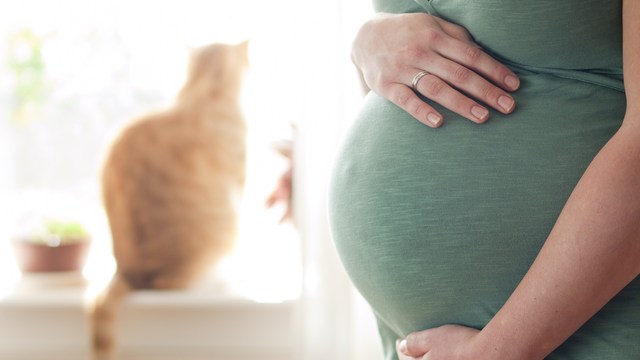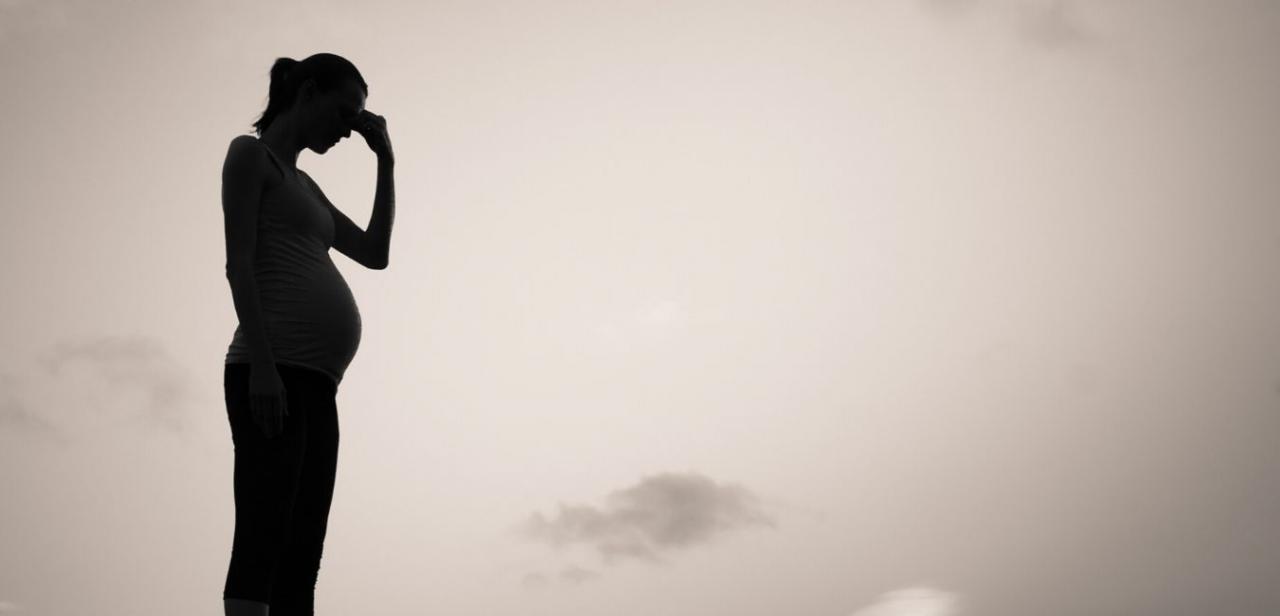 Hemera/Thinkstock
Hemera/Thinkstock
Vaginal bleeding in the first trimester of pregnancy is very common and occurs in 1 in 10 pregnancies. In the very early stage of pregnancy, you may get bleeding at around the time you would have had your period.
This has led some women to think they are having their period and not realize they are pregnant until later on. The bleeding, however, is usually lighter than a period, known as "spotting".
It is caused by the newly fertilized embryo implanting into the wall of the uterus. Implantation bleeding is normal and usually harmless.
However, any bleeding in pregnancy should be investigated as it could be a sign that something is wrong.
Causes of Bleeding in Pregnancy
Other causes of bleeding in pregnancy include:
• Breakthrough bleeding
During pregnancy this happens when not enough pregnancy hormones are produced to prevent the womb lining being lost. In effect, the woman has mini-periods, usually once or twice at the beginning of pregnancy.
Sometimes it occurs throughout pregnancy, although the area around the placenta is not affected so the baby is often okay. Continuing with monthly bleeding throughout pregnancy is rare.
• Cervical bleeding
This can occur due to changes in the cervix resulting from pregnancy, but it is more common in advanced stages of gestation.
• Health problems with the uterus, such as polyps or tumors.
• Placenta Praevia
The placenta is positioned too low down in the uterus. This can cause bleeding. As the pregnancy progresses, the placenta often moves up, solving the problem.
But if it remains low-lying, you may have to have extra monitoring during labor in case of excessive bleeding or in case the cord comes down first, before the baby (known as cord prolapse). If the placenta is so low it covers the cervix, you will have to have a caesarean as it is blocking your baby’s exit from your body.
• Threatened Miscarriage
This is bleeding and/or abdominal cramping that occurs anytime in the first 20 weeks of pregnancy. However, actual miscarriage does not occur. Babies survive in about 50 percent of cases of bleeding and pain like this.
• Miscarriage
This is when the baby dies in utero and is spontaneously expelled from the womb. It sadly occurs in one in every four pregnancies and usually happens in the first 12 weeks, but can happen later. Often, the cause of miscarriage is not known but chromosomal abnormalities in the baby are highly suspected.
There are differences between what a woman experiences during a threatened miscarriage and an actual miscarriage. In an actual miscarriage she will usually have low back pain or abdominal pain that varies in intensity and regularity. She may pass tissue and what appears to be blood clots from her vagina. This process can go on for as long as two weeks.
If you are pregnant and are having bleeding, make an emergency appointment to see your doctor, who may be able to determine the cause of the bleeding and find out if your baby has a heartbeat or not.
You should also lie down and rest as much as possible and not do any heavy lifting, although unfortunately if a miscarriage has already started to occur, there is nothing that doctors can do to stop it.
Sources:
What Causes Bleeding During Pregnancy? NHS Choices. Web. 9th May 2012. http://www.nhs.uk/chq/pages/938.aspx?categoryid=54&subcategoryid=134
Periods during Pregnancy, BBC Health, Dr. Trisha Macnair. Web. 9th May 2012. http://www.bbc.co.uk/health/physical_health/pregnancy/pregnancy_periods.shtml
Miscarriage – Threatened, Medline Plus. Web. 9th May 2012. http://www.nlm.nih.gov/medlineplus/ency/article/000907.htm
Miscarriage Statistics, Tommy’s. Web. 9th May 2012. http://www.tommys.org/Page.aspx?pid=383
Joanna is a freelance health writer for The Mother magazine and Suite 101 with a column on infertility, http://infertility.suite101.com/ She is the mother of five children (and four miscarriages) and practices natural childbirth, delayed cord clamping, full term breastfeeding and organic food diet.
Reviewed May 9, 2012
by Michele Blacksberg RN
Edited by Jody Smith






Add a CommentComments
There are no comments yet. Be the first one and get the conversation started!